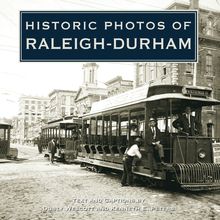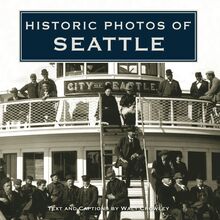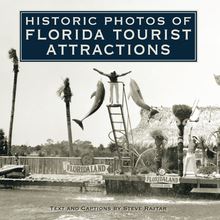Historic Photos of Ann Arbor , livre ebook
183
pages
English
Ebooks
2007
Vous pourrez modifier la taille du texte de cet ouvrage
Obtenez un accès à la bibliothèque pour le consulter en ligne En savoir plus
Découvre YouScribe en t'inscrivant gratuitement
Découvre YouScribe en t'inscrivant gratuitement
183
pages
English
Ebooks
2007
Vous pourrez modifier la taille du texte de cet ouvrage
Obtenez un accès à la bibliothèque pour le consulter en ligne En savoir plus
Publié par
Date de parution
19 novembre 2007
Nombre de lectures
2
EAN13
9781618585967
Langue
English
Poids de l'ouvrage
14 Mo
Publié par
Date de parution
19 novembre 2007
Nombre de lectures
2
EAN13
9781618585967
Langue
English
Poids de l'ouvrage
14 Mo
HISTORIC PHOTOS OF
ANN ARBOR
T EXT AND C APTIONS BY A LICE G OFF AND M EGAN C OONEY
Panorama of Ann Arbor from Sunset Road (formerly Chubb Road) facing southeast, ca. 1890.
HISTORIC PHOTOS OF
ANN ARBOR
Turner Publishing Company
200 4th Avenue North Suite 950
Nashville, Tennessee 37219
(615) 255-2665
412 Broadway P.O. Box 3101
Paducah, Kentucky 42002-3101
(270) 443-0121
www.turnerpublishing.com
Historic Photos of Ann Arbor
Copyright 2007 Turner Publishing Company
All rights reserved.
This book or any part thereof may not be reproduced or transmitted in any form or by any means, electronic or mechanical, including photocopying, recording, or by any information storage and retrieval system, without permission in writing from the publisher.
Library of Congress Control Number: 2007929610
ISBN-13: 978-1-59652-389-0
Printed in the United States of America
07 08 09 10 11 12 13 14-0 9 8 7 6 5 4 3 2 1
C ONTENTS
A CKNOWLEDGMENTS
P REFACE
G ROWTH OF A U NIVERSITY T OWN (1860-1899)
A UTOMOBILES , W AR, AND I NFLUENZA (1900-1919)
L OOKING I NWARD (1920-1939)
O N THE N ATIONAL S TAGE (1940-1960 S )
N OTES ON THE P HOTOGRAPHS
A Navy recruiting officer and couple. Military recruiting was especially vigorous in Ann Arbor, with its high population of young people. In 1942, the University Regents established the Division for Emergency Training, aimed at students preparing for military service.
A CKNOWLEDGMENTS
This volume, Historic Photos of Ann Arbor , is the result of the cooperation and efforts of many individuals and organizations. It is with great thanks that we acknowledge in particular the Bentley Historical Library, University of Michigan, for their generous support.
The authors would also like to thank Karen Jania and the Bentley Historical Library reference staff for all of their help and support.
P REFACE
Ann Arbor has thousands of historic photographs that reside in archives, both locally and nationally. This book began with the observation that, while those photographs are of great interest to many, they are not easily accessible. During a time when Ann Arbor is looking ahead and evaluating its future course, many people are asking, How do we treat the past? These decisions affect every aspect of the city-architecture, public spaces, commerce, infrastructure-and these, in turn, affect the way that people live their lives. This book seeks to provide easy access to a valuable, objective look into the history of Ann Arbor.
The power of photographs is that they are less subjective than words in their treatment of history. Although the photographer can make decisions regarding subject matter and how to capture and present it, photographs do not provide the breadth of interpretation that text does. For this reason, they offer an original, untainted perspective that allows the viewer to interpret and observe.
This project represents countless hours of review and research. The researchers and writer have reviewed thousands of photographs in numerous archives. We greatly appreciate the generous assistance of the individuals and organizations listed in the acknowledgments of this work, without whom this project could not have been completed.
The goal in publishing this work is to provide broader access to this set of extraordinary photographs that seek to inspire, provide perspective, and evoke insight that might assist people who are responsible for determining Ann Arbor s future. In addition, the book seeks to preserve the past with adequate respect and reverence.
With the exception of touching up imperfections caused by the damage of time and cropping where necessary, no other changes have been made. The focus and clarity of many images is limited to the technology and the ability of the photographer at the time they were taken.
The work is divided into eras. Beginning with some of the earliest known photographs of Ann Arbor, the first section records photographs through the end of the nineteenth century. The second section spans the beginning of the twentieth century through World War I. Section Three looks at the years between the wars. The last section covers the World War II era to recent times.
In each of these sections we have made an effort to capture various aspects of life through our selection of photographs. People, commerce, transportation, infrastructure, religious institutions, and educational institutions have been included to provide a broad perspective.
We encourage readers to reflect as they go walking in Ann Arbor, strolling through the city, its parks, and its neighborhoods. It is the publisher s hope that in utilizing this work, longtime residents will learn something new and that new residents will gain a perspective on where Ann Arbor has been, so that each can contribute to its future.
-Todd Bottorff, Publisher
The west side of Main Street, between Huron and Washington streets, before 1862. The street s original plank sidewalk is visible, as well as hitching posts for horses and buggies. Pictured are Herman Schlotterbeck s confectionery and bakery, John W. Hunt s hardware store, C. H. Millen s dry goods store, and the printing office of the newspaper Ann Arbor Argus .
G ROWTH OF A U NIVERSITY T OWN
(1860-1899)
The future looked very promising for the small frontier town of Ann Arbor in the first part of the nineteenth century. Founded in 1824 by Easterners John Allen and Elisha Rumsey (and as legend has it, named after their wives, both of whom were called Ann), Ann Arbor benefited from a number of lucky breaks. In 1827 it became the seat of Washtenaw County, receiving state funding and prestige as a result. In 1836, Ann Arbor lost the bid to become capital of the State of Michigan, but one year later won what may have turned out to be a larger prize. In 1837 the city became the new site for the University of Michigan, after it offered up forty acres for the campus, free of charge. In 1839, Ann Arbor also became a stop on the Michigan Central Railroad, making it a key transportation hub.
In the latter part of the century, Ann Arbor s population increased steadily, attracting not only settlers from the east, but also a large population of German immigrants. The townspeople established a local government, organized a volunteer fire department, and assembled a small police force. They built homes, churches, and schools, and operated flour mills, breweries, and tanneries. The first president of the University, Henry Philip Tappan, sought to create a university on the German model, and in his few years of tenure, he built many buildings on the 40-acre campus. Later presidents, most notably the third, James B. Angell (who was much beloved in Ann Arbor and held the post for thirty-eight years), dramatically expanded the curriculum and physical size of the university. By 1866 the student body had grown to 1,205, with many of the students veterans of the Civil War.
Both the university and the town of Ann Arbor experienced a construction and population boom after the Civil War. A number of impressive buildings were erected during this time, including the beautiful Second Courthouse, built in 1872, and the Italian villa-style fire station, built in 1882. The city also experienced an increase in the number of saloons, hotels, and commercial businesses lining its main streets. City services expanded-the first telephone exchange was installed in 1881, and in 1884 the first electric lights in town were switched on. A water and sewer system followed in 1885 and 1894, respectively. In 1890 an electric railway was introduced, connecting the university area at State Street with both downtown and the train depot. These new connections, combined with local mail delivery, changed the university area into another commercial center. By the end of the nineteenth century, Ann Arbor had grown from a small frontier village to a bustling university town, one perfectly described by the 1913 Civic Association motto City of Knowledge and Homes.
On April 15, 1861, a crowd assembled at the old Courthouse to hear the university president, Henry Tappan, announce the firing on Fort Sumter and the beginning of the Civil War. Tappan urged the assembled townspeople to support President Lincoln and to form military companies, in preparation for the war. Huron Street is visible in the background.
Soon after Tappan s April 15 announcement, three companies of student soldiers were formed. Pictured here are the captains of these companies in 1861: Charles K. Adams, Captain of the University Guards; Isaac H. Elliott, Captain of the Chancellor Greys; and Albert Nye, Captain of the Ellsworth Zouaves. Nearly half (78 out of 165) of the students who were matriculated between 1859 and 1862 went on to fight in the Civil War.
Located on the southwest corner of Main and Washington streets, the Hangsterfer Block (building) was erected in 1860 by German immigrant Jacob Hangsterfer. The First National Bank opened on the ground floor in 1863, joining Hangsterfer s confectionery. The third floor was a large ballroom (known as Hangsterfer Hall) that served as an important cultural center for many years, hosting popular dances, plays, and social gatherings.
The Gregory House, ca. 1868. Located on the northwest corner of Huron and Main streets, the Gregory replaced the American Hotel in 1862. By 1872, Ann Arbor had eight hotels.
This 1865 photograph commemorates a game played between the Ann Arbor Baseball Club and their rivals, the Wahoo Baseball Club of Dexter, Michigan. Baseball became popular in Ann Arbor in the early 1860s, and in 1864 the university formed its first team.
A view of Main Street northwest from Washington Street, ca. 1871-74. The Gregory House is visible at the corner of Huron and Main, and toward the foreground, Hutzel Co. s storefront advertises paints and oils.
State Street facing south from Huron, including a view of the Methodist Episcopal Church, ca. 1














